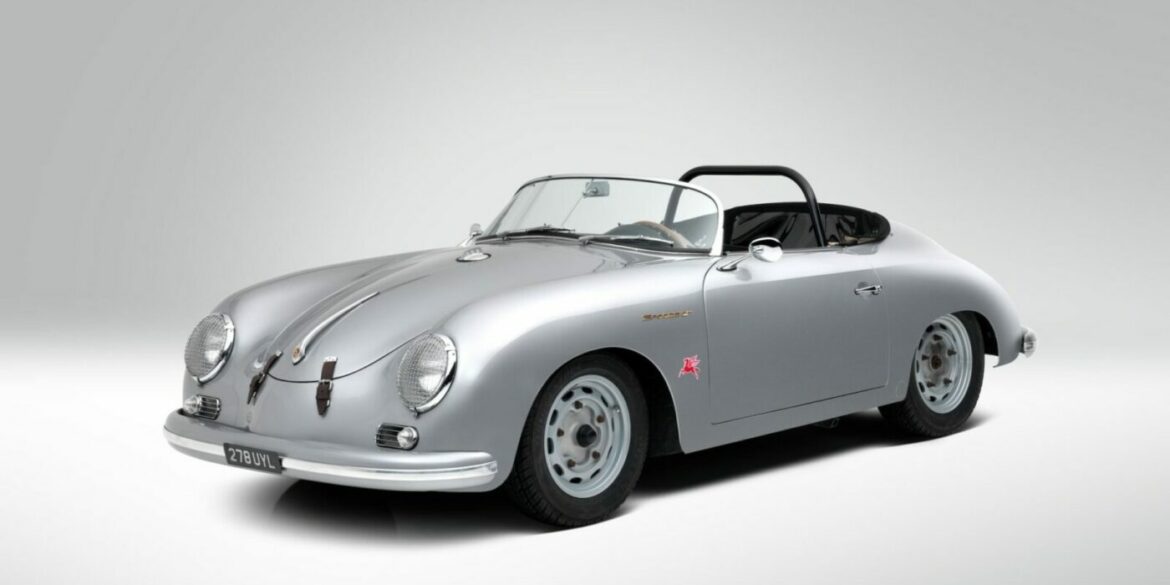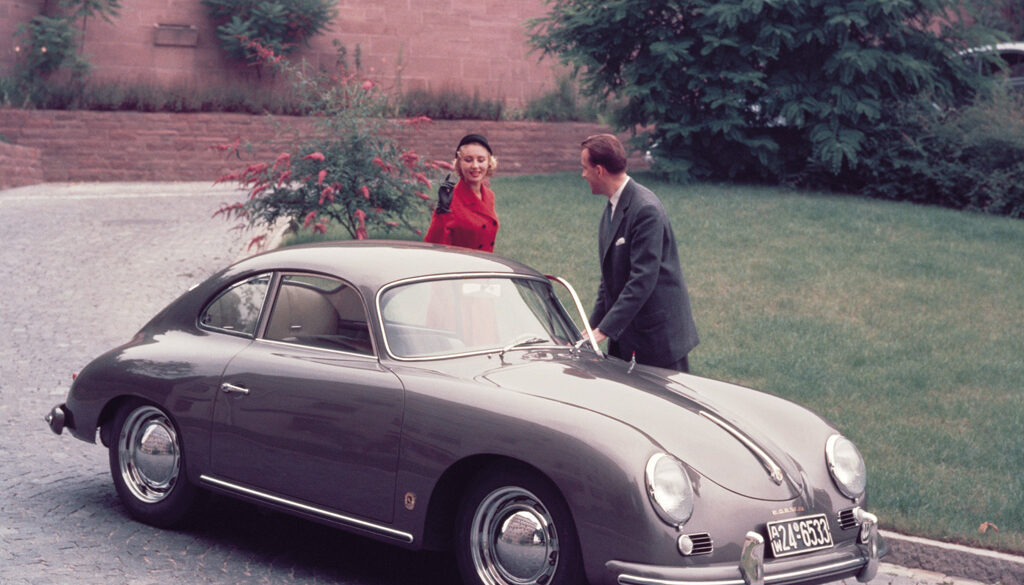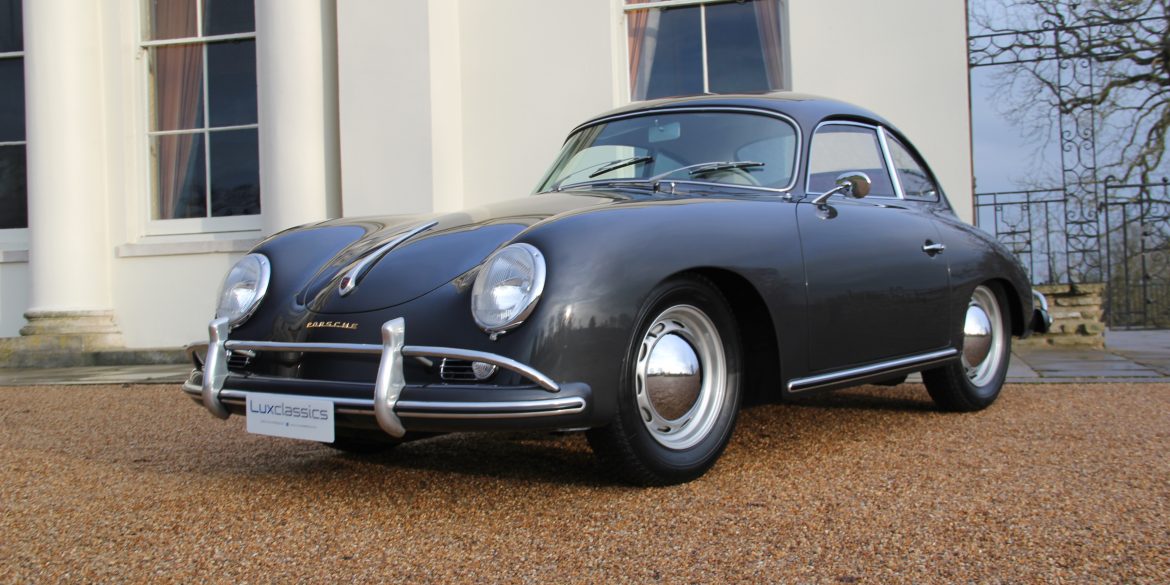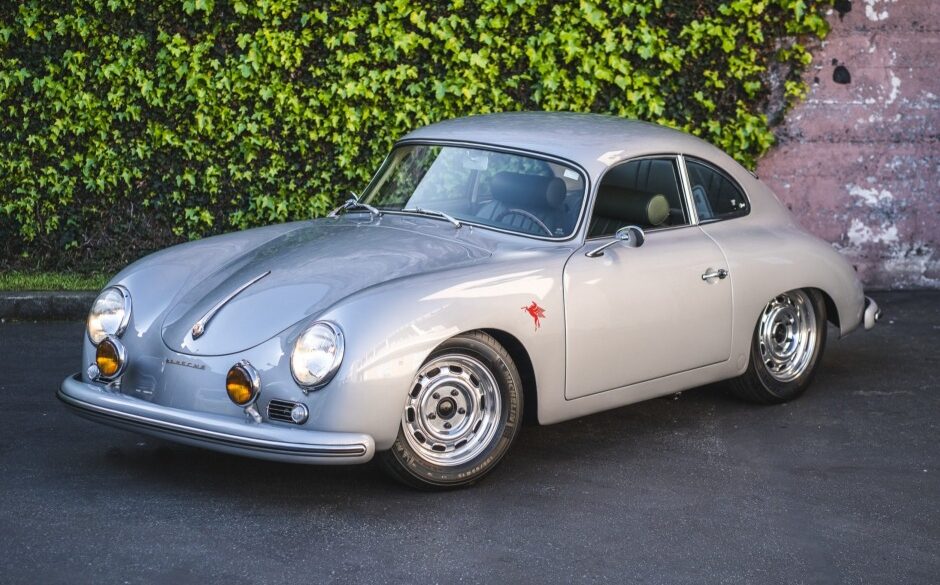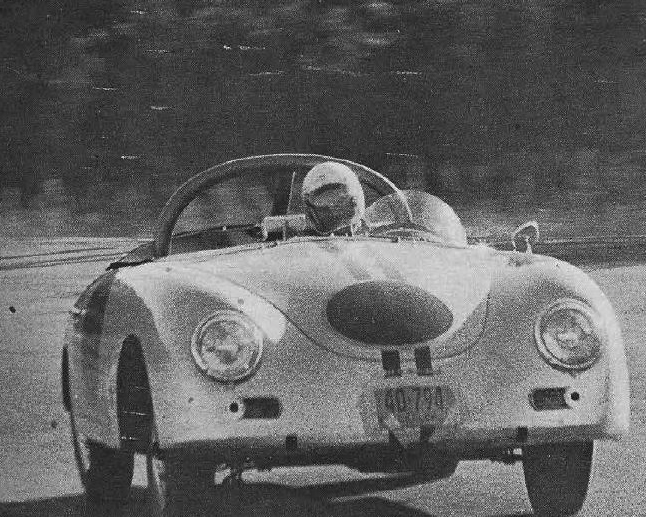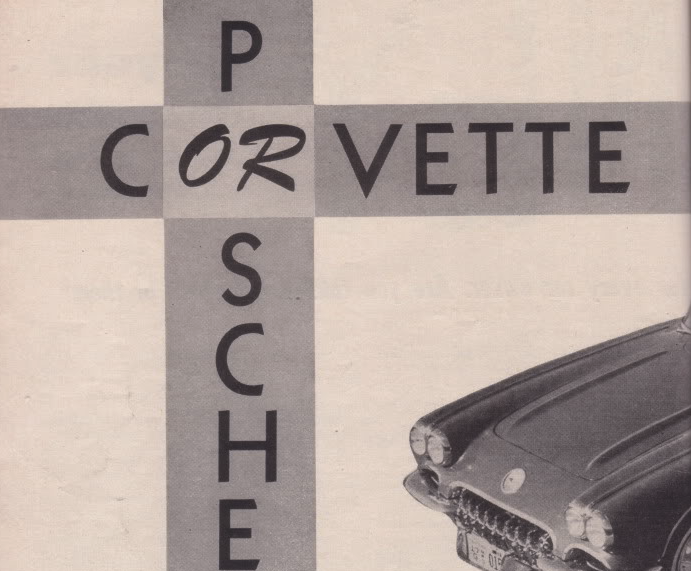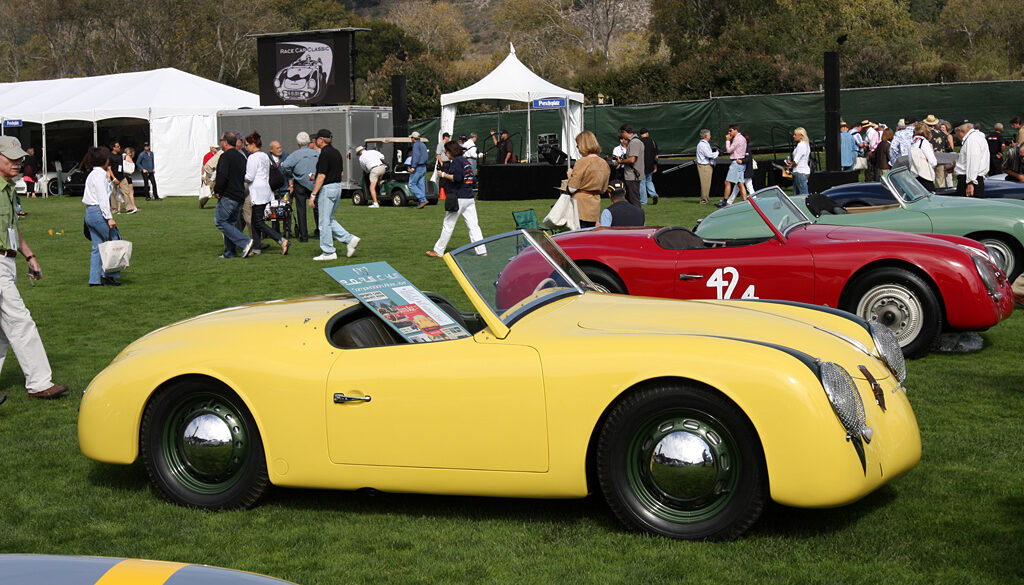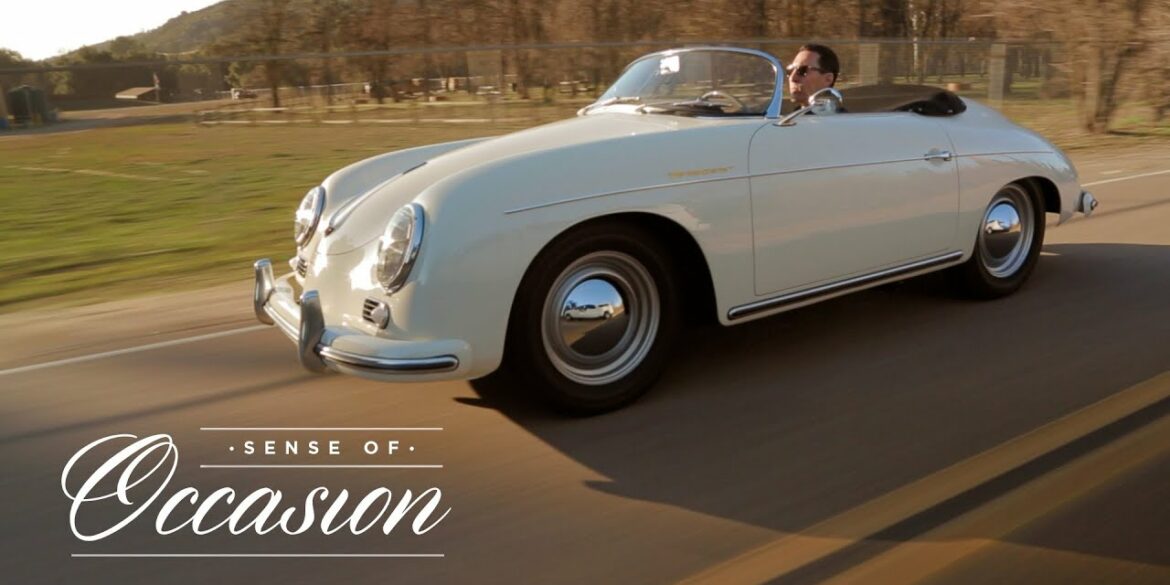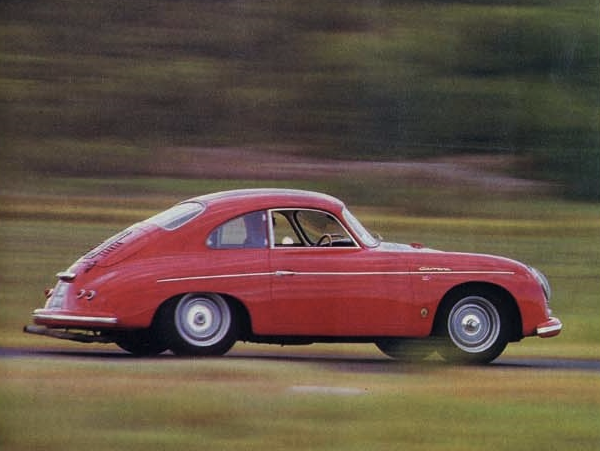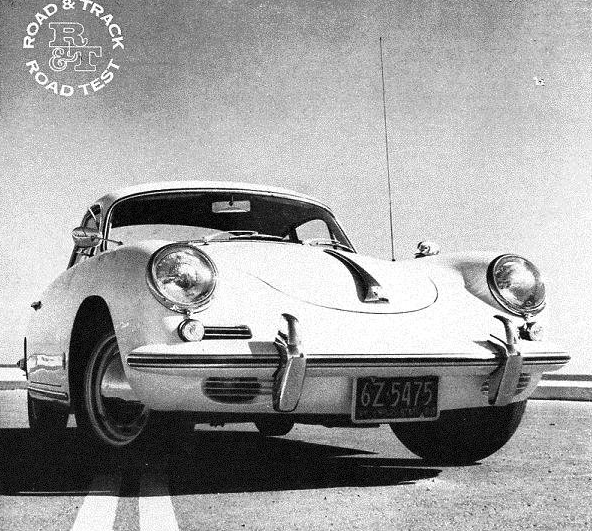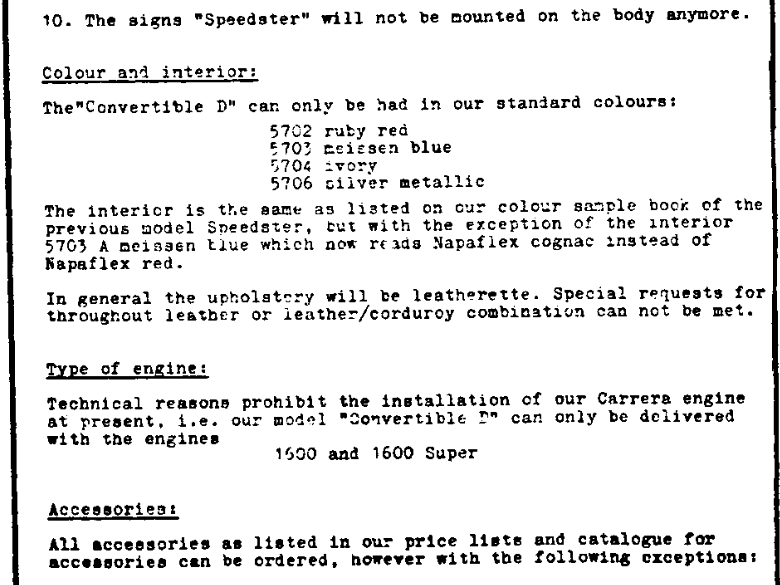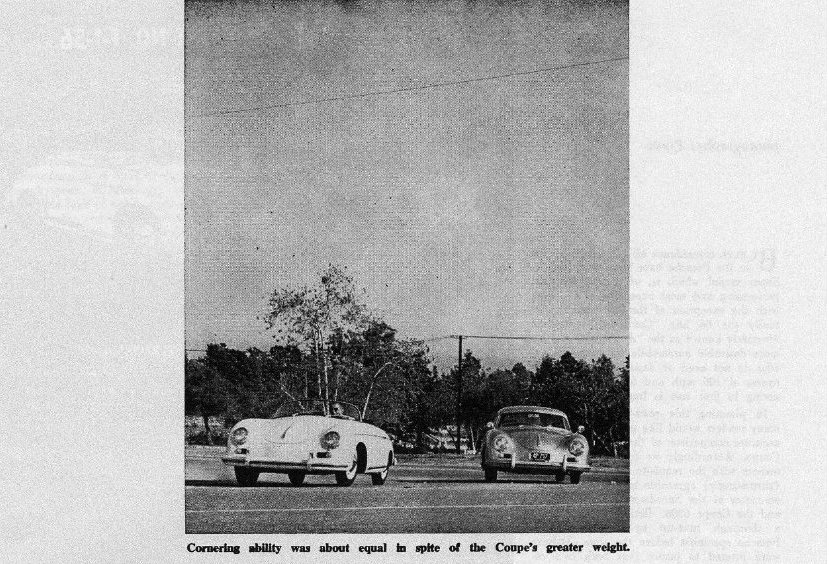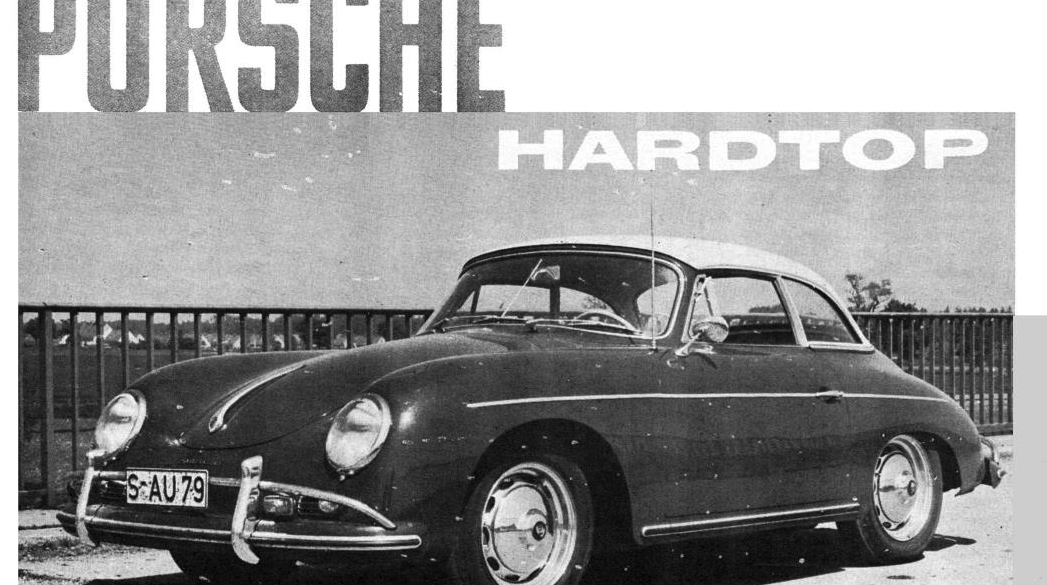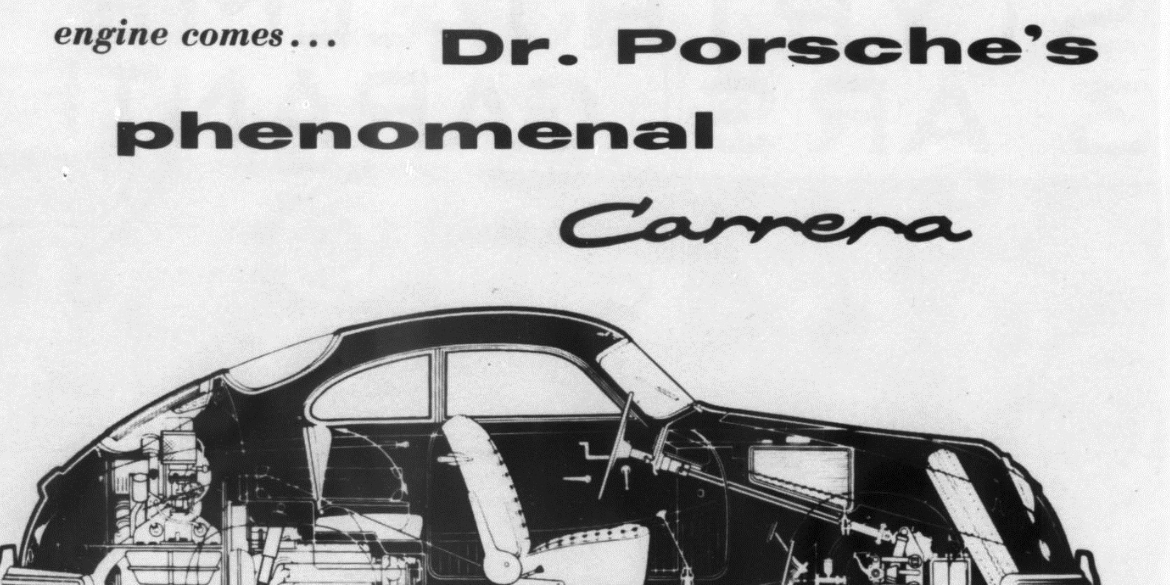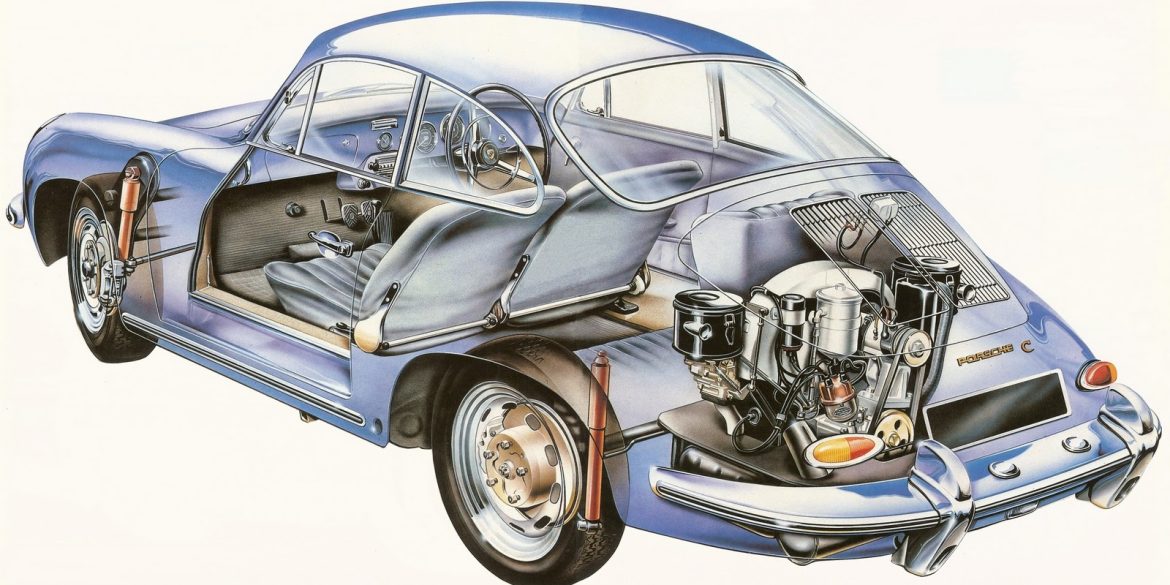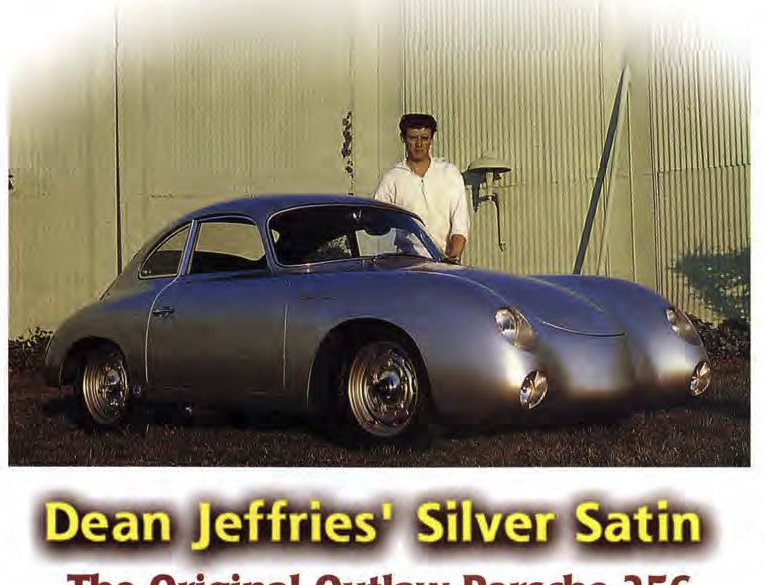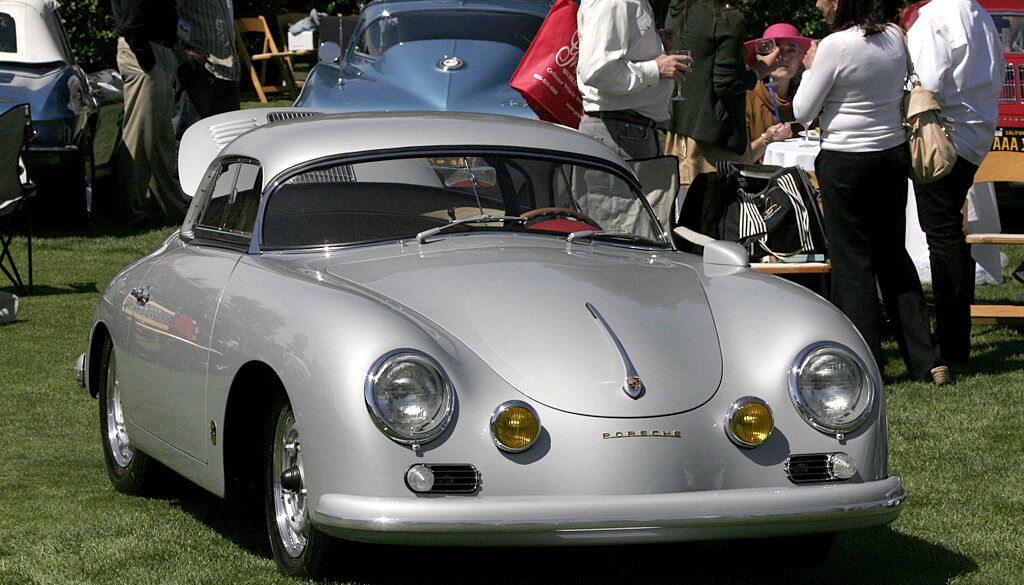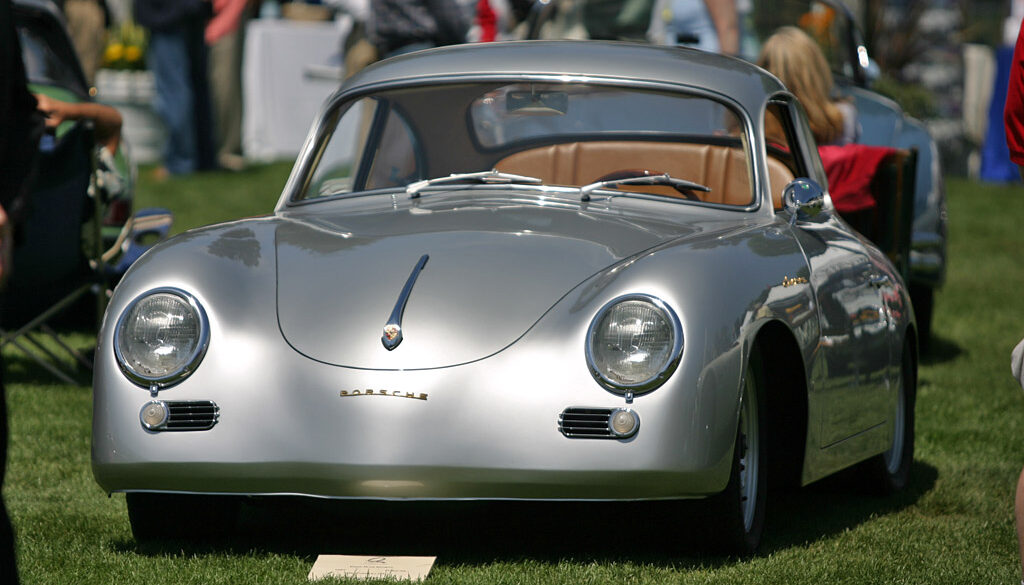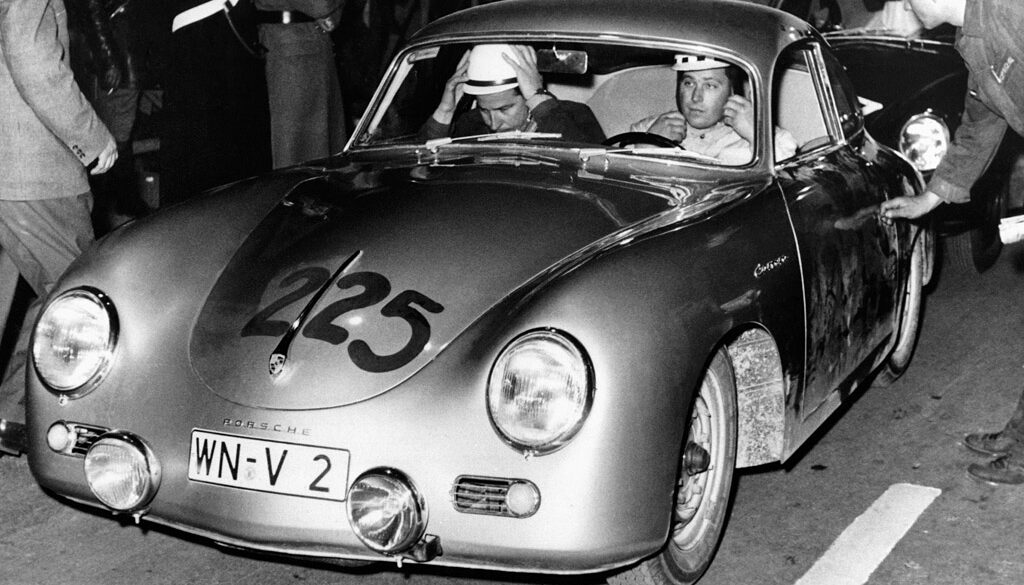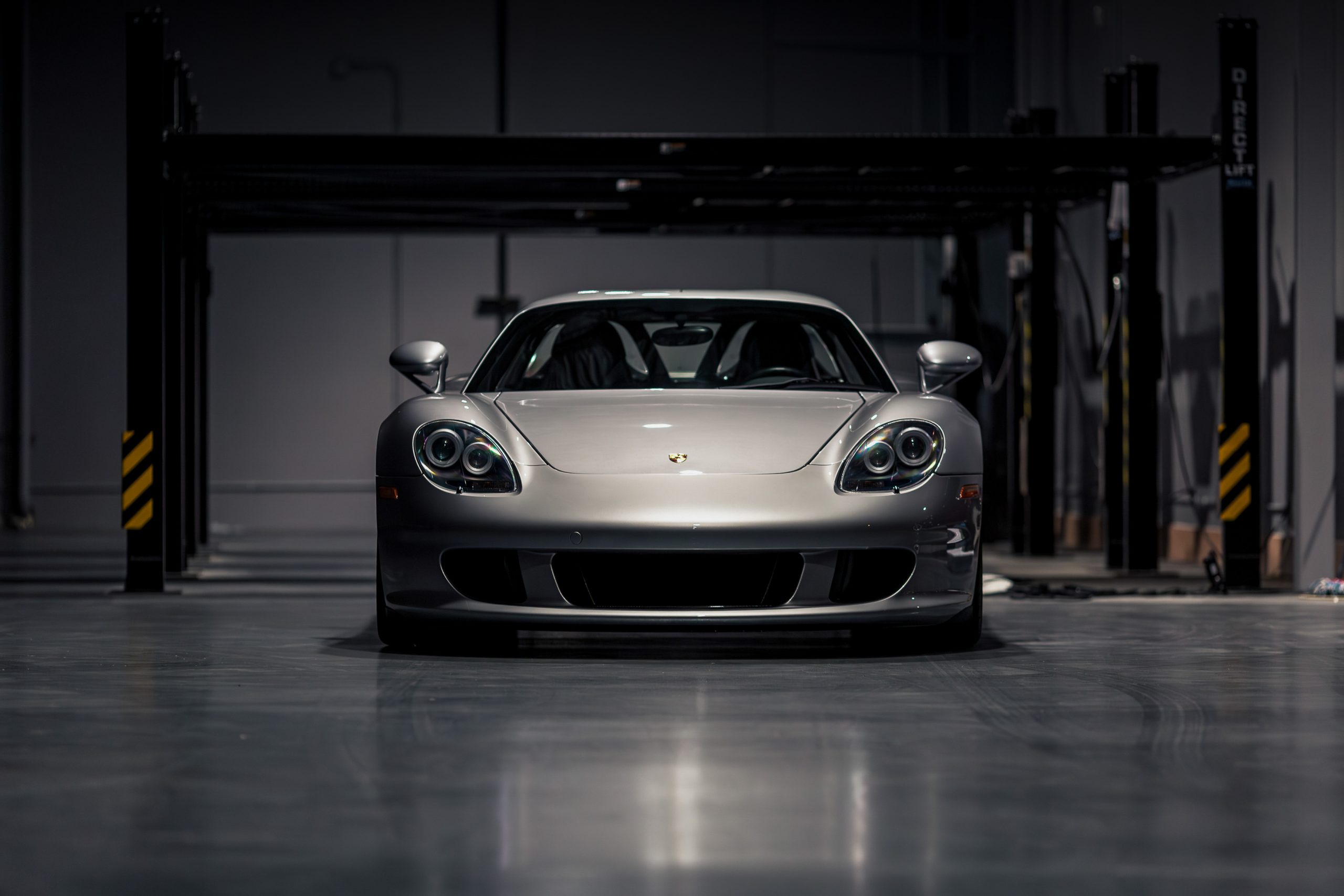Despite looking outwardly similar to the preceding models, Porsche thoroughly updated their 356 line in 1956 and called their new model the 356A. At the core, this included a larger 1600 cc engine, but also a curved-glass windshield and a thoroughly revised suspension. At the 1955 Frankfurt Motor Show in September of 1955, Porsche released the 356A/1600 to the world with cabriolet, coupe and speedster bodies from Reutter. The 356A/1600 was a great performer, good for a sprint to 60 mph in 13.5 seconds and hit a top speed of 109 mph.
Despite looking outwardly similar to the preceding models, Porsche thoroughly updated their 356 line in 1956 and called their new model the 356A. At the core, this included a larger 1600 cc engine, but also a curved-glass windshield and a thoroughly revised suspension. At the 1955 Frankfurt Motor Show in September of 1955, Porsche released the 356A/1600 to the world with cabriolet, coupe and speedster bodies from Reutter. Produced in 1959 only, the Porsche 356 Convertible D was the replacement for the 356 A Speedster, which was discontinued after 1958.
From the outside, the 356A kept to the Porsche mantra of stepwise evolution. The new model was outwardly identical to the previous version except for the wider tires, a small rub-strip below the doors, a fully-curved front window and enamel paint replacing lacquer previously used. The 356 A came with an all-alloy air-cooled Flat 4 engine in four states of tune, with the 1300 having Type 589/2 engine with 60 bhp and 65 lb-ft of torque.
From the outside, the 356A kept to the Porsche mantra of stepwise evolution. The new model was outwardly identical to the previous version except for the wider tires, a small rub-strip below the doors, a fully-curved front window and enamel paint replacing lacquer previously used. The 356 A came with an all-alloy air-cooled Flat 4 engine in four states of tune, with the 1300 having Type 506/2 engine with 44 bhp and 60 lb-ft.
This isn't technically a Speedster, but the Type 540 (Typ 540 K/9-1 to be very precise) - known more commonly as the America Roadster - started the idea. The American Roadster was the direct predecessor of the Speedster. U.S. importer Max Hoffman convinced Porsche it needed a lightweight convertible to compete. It only had an emergency folding roof and could keep up with larger sports cars of the era. But the production methods used to create the America Roadster’s aluminum body proved to be too expensive, and in 1952 Porsche built only 21 units before its discontinuation in 1953.
A Drive In A 1956 Porsche 356A T1 Speedster Starting any classic car is special. There is the sensation that something distinct and superior is taking place because of the rituals observed and details you notice. On this 1956 Porsche 356A T1 Speedster for example the windscreen is removable, the...
A handful of push-rod 356As were delivered from the factory with a lightweight package that was usually reserved for the Carrera race cars. Called GTs, these got the stripped out interior, aluminum doors, a large fuel tank and Porsche ATE disc brakes. As few as four Speedsters came equipped this way. Since the four-cam was only a marginal improvement in power, the regular 1600 Super was more than enough for the small car.
Following the Pre-A prototypes and a run of quad-cams with the 1500cc engine, the 1600 Carrera GT was a performance 356 that used a larger version of the Porsche 550 Spyder's potent engine. As early as 1958, some Carreras were fitted with a larger engine known as the Type 692. The new unit featured a larger displacement which was better suited for the 1600cc class. Furthermore, it was improved considerably adopting plain bearings and new ignition system.
In May of 1957, Porsche offered two distinct versions of the Carrera, one called the de Luxe for the street and this model, the Gran Turismo, for the track. The main difference between the two models was weight. The Carrera GT was a purpose-built car with little on board amenities. For instance, no heater was fitted giving the car its 'icebox' nickname. Furthermore, the interior was stripped of sound deadening, side windows were replaced by pull-up Perspex units and only simple door panels were fitted.
No More Content


